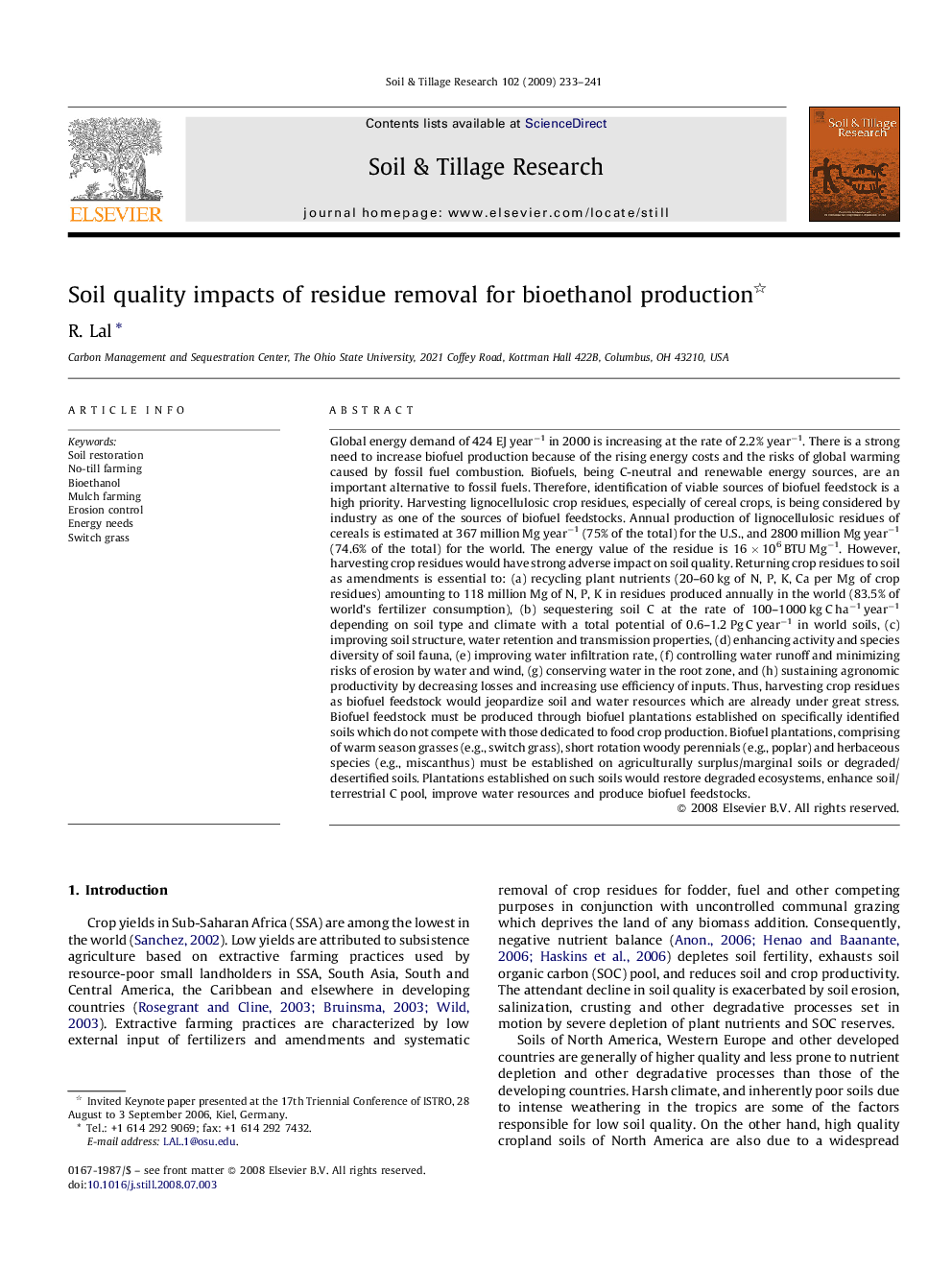| کد مقاله | کد نشریه | سال انتشار | مقاله انگلیسی | نسخه تمام متن |
|---|---|---|---|---|
| 306465 | 513096 | 2009 | 9 صفحه PDF | دانلود رایگان |

Global energy demand of 424 EJ year−1 in 2000 is increasing at the rate of 2.2% year−1. There is a strong need to increase biofuel production because of the rising energy costs and the risks of global warming caused by fossil fuel combustion. Biofuels, being C-neutral and renewable energy sources, are an important alternative to fossil fuels. Therefore, identification of viable sources of biofuel feedstock is a high priority. Harvesting lignocellulosic crop residues, especially of cereal crops, is being considered by industry as one of the sources of biofuel feedstocks. Annual production of lignocellulosic residues of cereals is estimated at 367 million Mg year−1 (75% of the total) for the U.S., and 2800 million Mg year−1 (74.6% of the total) for the world. The energy value of the residue is 16 × 106 BTU Mg−1. However, harvesting crop residues would have strong adverse impact on soil quality. Returning crop residues to soil as amendments is essential to: (a) recycling plant nutrients (20–60 kg of N, P, K, Ca per Mg of crop residues) amounting to 118 million Mg of N, P, K in residues produced annually in the world (83.5% of world's fertilizer consumption), (b) sequestering soil C at the rate of 100–1000 kg C ha−1 year−1 depending on soil type and climate with a total potential of 0.6–1.2 Pg C year−1 in world soils, (c) improving soil structure, water retention and transmission properties, (d) enhancing activity and species diversity of soil fauna, (e) improving water infiltration rate, (f) controlling water runoff and minimizing risks of erosion by water and wind, (g) conserving water in the root zone, and (h) sustaining agronomic productivity by decreasing losses and increasing use efficiency of inputs. Thus, harvesting crop residues as biofuel feedstock would jeopardize soil and water resources which are already under great stress. Biofuel feedstock must be produced through biofuel plantations established on specifically identified soils which do not compete with those dedicated to food crop production. Biofuel plantations, comprising of warm season grasses (e.g., switch grass), short rotation woody perennials (e.g., poplar) and herbaceous species (e.g., miscanthus) must be established on agriculturally surplus/marginal soils or degraded/desertified soils. Plantations established on such soils would restore degraded ecosystems, enhance soil/terrestrial C pool, improve water resources and produce biofuel feedstocks.
Journal: Soil and Tillage Research - Volume 102, Issue 2, March 2009, Pages 233–241